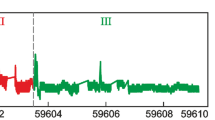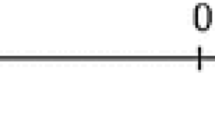A quantum clock time scale synchronization algorithm is proposed. The algorithm excludes systematic synchronization error and minimizes random error. Relations are found for calculating the optimum number of measurements and minimum error.


Similar content being viewed by others
References
G. P. Pashev, “Analysis of discrete algorithms for synchronizing a group of quantum frequency standards,” Izmer. Tekhn., No. 9, 56–61 (2009).
G. P. Pashev, “Maintenance of the unit of frequency and the time scale by high-stability oscillators synchronized with radio signals from space navigation systems,” Izmer. Tekhn., No. 12, 26–31 (2012).
C. Rovera, M. Abgrell, and M. Siccardif, “Characterization of an auxiliary offset generator for setting H-masers,” Proc. Europ. Frequency and Time Forum, April 2012, Gothenberg, Sweden (2012), pp. 14–15.
D. Matsacis, “Time and frequency activities at the Naval Observatory,” Proc. 2009 Joint Meeting of the Europ. Frequency and Time Forum and the IEEE Int. Frequency Control Symp., April 20–24, 2009, Besancon, France, pp. 653–658.
I. N. Chernyshov, V. Yu. Solov’ev, and I. A. Pisarev, “Time interval former,” Time and Space Metrology: Proc. 7th Int. Symp., Suzdal (2014), pp. 235–236.
A. V. Zderiglazova, L. N. Kurysheva, and V. M. Akulov, “A study of potential methods for forming working scales that physically implement a coordinated local reference time scale,” ibid., pp. 231–234.
S. B. Pushkin, and V. G. Pal’chikov, State Service for Time, Frequency, and Determination of Earth’s Rotation Parameters: Monograph, VNIIFTRI, Moscow (2013).
Characterization of Sources and Time Scale Formation. Recommendation ITU-R TF.583-3. Measures for Random Instabilities in Frequency and Time (phase).
J. Kodet, I. Prochazka, and J. Blazej, “Two-way time transfer with picosecond precision and accuracy,” Europ. Frequency and Time Forum, EFTF 2012, pp. 484–487.
Author information
Authors and Affiliations
Corresponding author
Additional information
Translated from Izmeritel’naya Tekhnika, No. 6, pp. 51–54, June, 2016.
Rights and permissions
About this article
Cite this article
Pashev, G.P. Optimum Algorithm for Quantum Clock Time Scale Synchronization. Meas Tech 59, 628–632 (2016). https://doi.org/10.1007/s11018-016-1021-2
Received:
Published:
Issue Date:
DOI: https://doi.org/10.1007/s11018-016-1021-2




